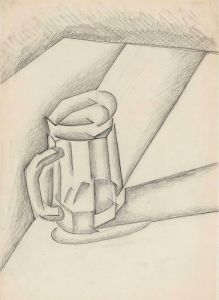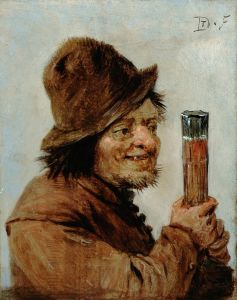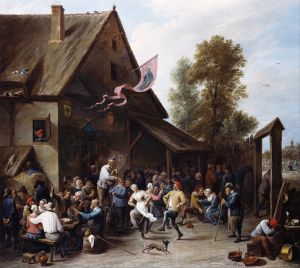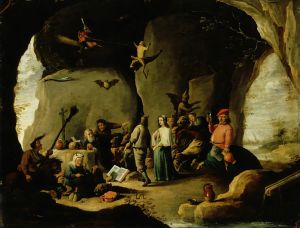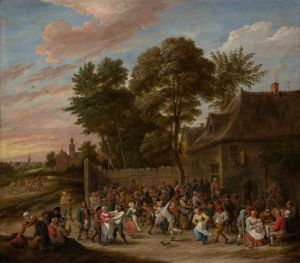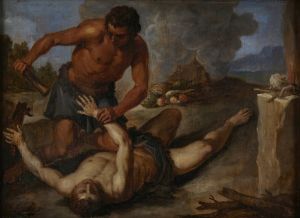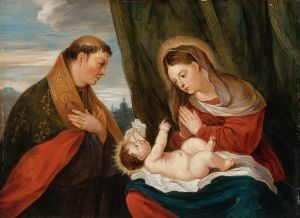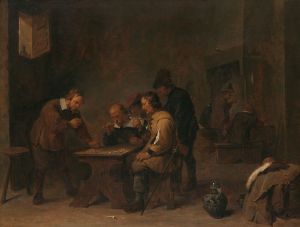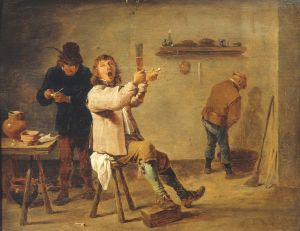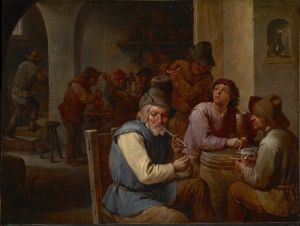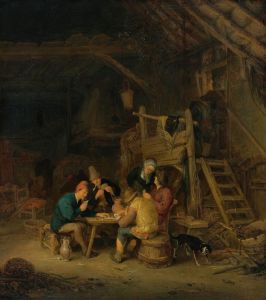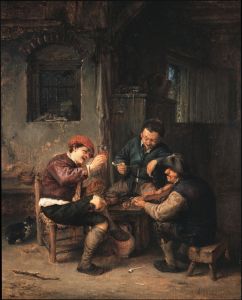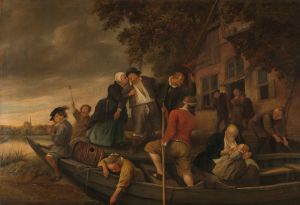
Peasants Dancing in Front of an Inn
A hand-painted replica of David Teniers The Younger’s masterpiece Peasants Dancing in Front of an Inn, meticulously crafted by professional artists to capture the true essence of the original. Each piece is created with museum-quality canvas and rare mineral pigments, carefully painted by experienced artists with delicate brushstrokes and rich, layered colors to perfectly recreate the texture of the original artwork. Unlike machine-printed reproductions, this hand-painted version brings the painting to life, infused with the artist’s emotions and skill in every stroke. Whether for personal collection or home decoration, it instantly elevates the artistic atmosphere of any space.
David Teniers the Younger was a prominent Flemish artist known for his genre scenes, landscapes, and depictions of peasant life. "Peasants Dancing in Front of an Inn" is one of his notable works, showcasing his skill in capturing the lively and spirited atmosphere of rural festivities. Teniers was born in Antwerp in 1610 and was part of a family of painters, with his father, David Teniers the Elder, being a significant influence on his early development as an artist.
"Peasants Dancing in Front of an Inn" exemplifies Teniers' ability to portray everyday life with a sense of realism and charm. The painting typically features a group of peasants engaged in merrymaking outside a rustic inn, a common setting in Teniers' works. The scene is animated with figures dancing, playing music, and enjoying each other's company, reflecting the social customs and traditions of the time. Teniers' attention to detail is evident in the varied expressions and postures of the figures, as well as in the depiction of their clothing and the surrounding environment.
Teniers was known for his use of color and light to create a warm and inviting atmosphere. In "Peasants Dancing in Front of an Inn," he employs a palette of earthy tones and soft lighting to enhance the convivial mood of the scene. The composition is carefully arranged to draw the viewer's eye across the canvas, capturing the dynamic movement of the dancers and the lively interaction among the figures.
The artist's work was highly regarded during his lifetime, and he enjoyed the patronage of notable figures, including Archduke Leopold Wilhelm of Austria, who appointed Teniers as the court painter and curator of his art collection. Teniers' paintings were sought after by collectors across Europe, and his influence extended beyond his native Flanders.
"Peasants Dancing in Front of an Inn" is part of a broader tradition of genre painting that flourished in the 17th century, particularly in the Low Countries. This tradition focused on scenes of everyday life, often with an emphasis on humor and social commentary. Teniers' work is characterized by its lightheartedness and the artist's keen observation of human behavior.
The painting is representative of Teniers' mature style, which combines elements of realism with a touch of idealization. His ability to capture the essence of rural life with authenticity and warmth has made his works enduringly popular. Today, "Peasants Dancing in Front of an Inn" can be found in various art collections and museums, where it continues to be appreciated for its artistic merit and historical significance.
David Teniers the Younger's contribution to the genre painting tradition is significant, and his works remain a valuable resource for understanding the cultural and social dynamics of 17th-century Flemish society. Through paintings like "Peasants Dancing in Front of an Inn," Teniers offers a window into the past, celebrating the vibrancy and resilience of rural communities.





